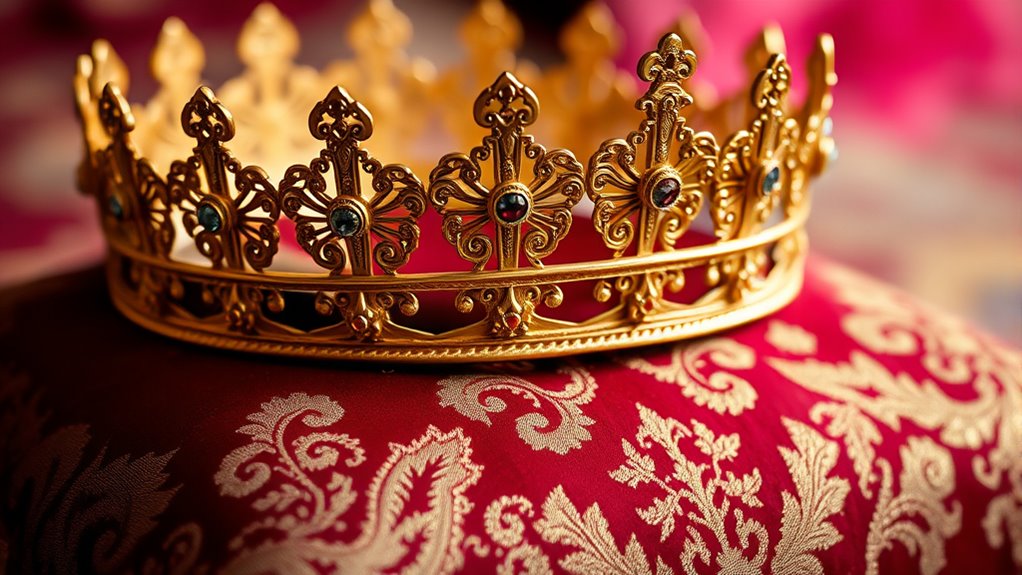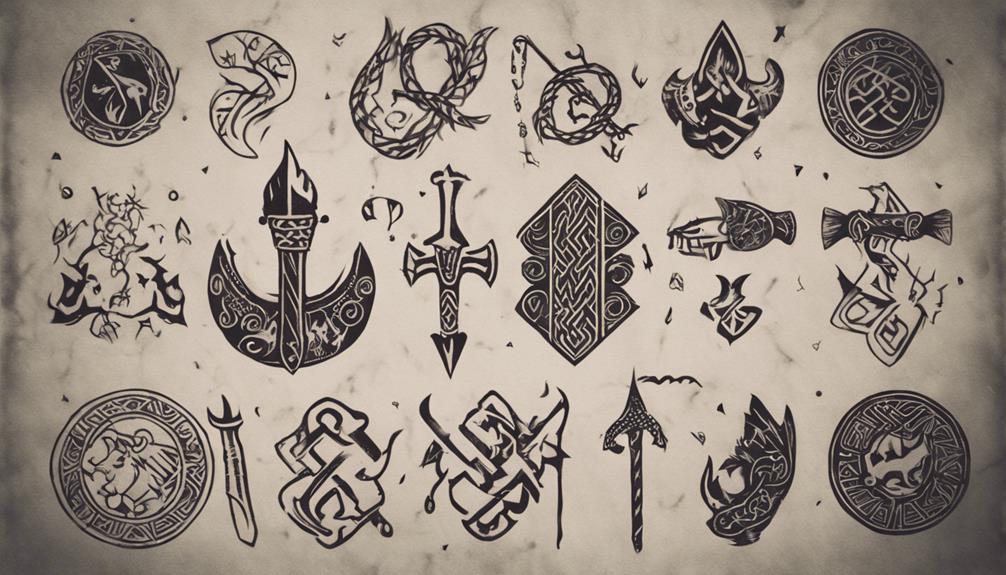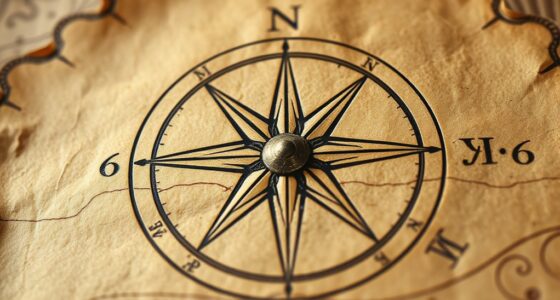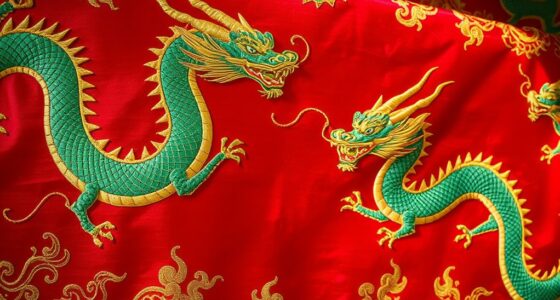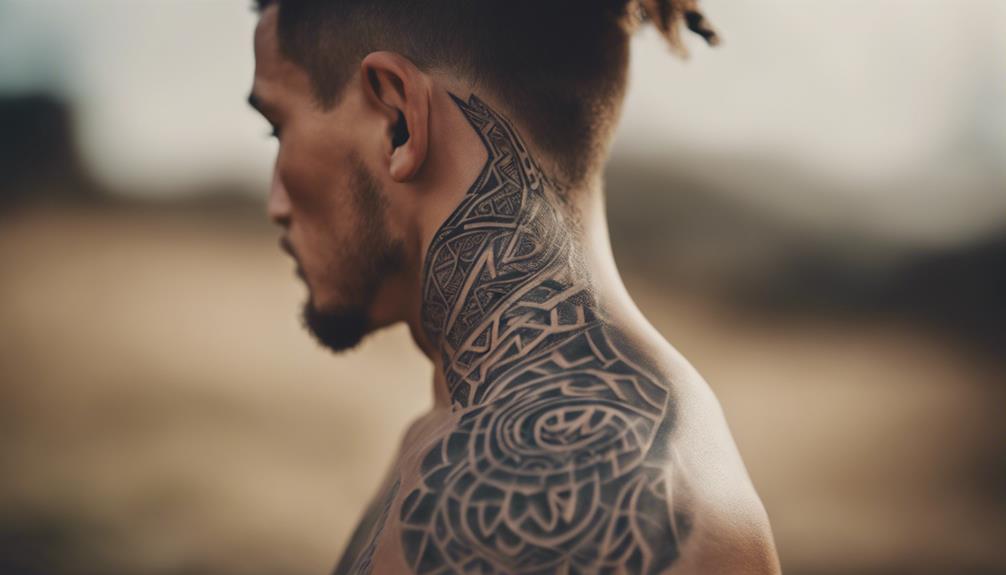Crown motifs in art symbolize authority and divinity, representing power, divine right, and spiritual legitimacy. They are used across cultures and eras to emphasize the sacred trust bestowed on rulers or divine figures, linking earthly power to higher forces. Whether seen in medieval or ancient art, crowns serve as universal signs of sovereignty and divine connection. To discover the deeper insights behind their layered meanings, keep exploring more about this compelling symbol.
Key Takeaways
- Crowns symbolize authority, divine right, and spiritual legitimacy across different cultures and historical periods.
- They serve as visual markers linking earthly rulers to divine or cosmic forces.
- In religious art, crowns emphasize spiritual authority and exalted status of saints and divine figures.
- Cultural variations depict crowns associated with gods, kings, and sacred power, reinforcing legitimacy.
- As enduring symbols, crowns visually communicate power and divine connection across generations.
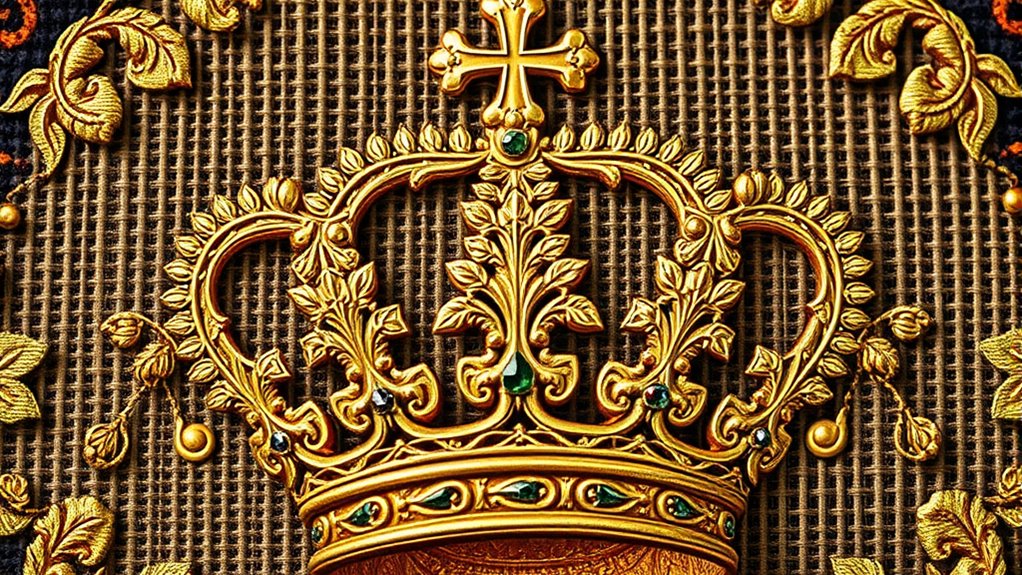
Have you ever wondered why crown motifs are so prevalent in art? The answer lies in their powerful symbolism of crowns, which embody authority, power, and divine right. Throughout history, artists have used crown imagery to communicate these themes, making it a universal symbol of leadership and legitimacy. When you see a crown in a painting or sculpture, you’re witnessing more than a decorative element; you’re observing a visual shorthand for status and sovereignty. The symbolism of crowns extends beyond mere decoration, often representing the divine authority granted to rulers by higher powers or spiritual spheres. This connection between crowns and divinity is deeply rooted in historical crown representations, where crowns were not just symbols of earthly power but also of spiritual legitimacy.
Crown motifs symbolize authority, divine right, and spiritual legitimacy across cultures and eras in art.
Historically, crown representations have varied across cultures and eras, yet their core meaning remains consistent. In medieval European art, crowns often appear on saints or kings, emphasizing their divine right to rule. These crowns aren’t just jewelry; they symbolize a sacred trust bestowed by God. Artists used crowns to elevate their subjects’ authority, making it clear that their power was not just political but also spiritual. Similarly, in ancient Egyptian art, crowns signified different gods and pharaohs, reflecting their divine status and eternal authority. In each case, the crown becomes a visual marker of legitimacy, linking the earthly ruler to divine or cosmic forces.
You’ll notice that in religious art, crowns are frequently used to signify saints and divine figures, reinforcing their spiritual authority. For example, Mary or saints depicted with crowns highlight their exalted status in heaven. These representations serve to remind viewers of the divine hierarchy and the sacred nature of authority. Over time, the depiction of crowns evolved, but their core symbolism remained intact. They continued to serve as visual cues of power, legitimacy, and divinity, transcending cultural boundaries.
In essence, crown motifs in art are more than ornamental; they are loaded with meaning. They represent a complex blend of authority, divine right, and spiritual legitimacy, rooted in centuries of tradition. When you observe these symbols, you’re engaging with a visual language that has communicated power across generations. Whether illustrating monarchs, saints, or divine figures, artists have consistently used crowns to express the profound connection between earthly authority and higher, divine forces. This enduring symbolism makes crown motifs a compelling and universal element in art’s portrayal of authority and divinity.
Frequently Asked Questions
How Did Crown Motifs Originate in Ancient Art?
You see crown motifs originate from early royal symbolism and religious iconography, where crowns represented divine authority and power. Ancient cultures, like Egypt and Mesopotamia, used them to signify kingship and divine right, often incorporating them into religious art. These motifs became a visual language, conveying authority, legitimacy, and divine connection, which persisted through history and influenced the way rulers and deities were depicted in artistic traditions worldwide.
Are Crown Symbols Universally Understood Across Different Cultures?
You might find that crown symbols aren’t universally understood, as cultural interpretations vary widely. While many see crowns as signs of power and divinity, symbolic variations mean some cultures view them differently or use different symbols altogether. This diversity adds richness to their meaning, reminding you that symbols often carry nuanced significance. So, don’t assume everyone interprets crowns the same way—cultural context shapes understanding in fascinating ways.
What Materials Were Traditionally Used for Crown Imagery in Art?
You’ll find that traditional crown imagery in art often uses gold leaf, precious stones, and intricate metalwork, reflecting regal symbolism and artistic craftsmanship. Artists historically employed these luxurious materials to emphasize authority and divinity, making the crown a powerful symbol of power. The use of such materials enhances the visual impact and conveys the importance of the figure, reinforcing the connection between material richness and notions of sovereignty and divine right.
How Do Crown Motifs Evolve in Contemporary Artistic Expressions?
You’ll find that in modern reinterpretations, crown motifs often symbolize empowerment and identity rather than authority, reflecting changing societal values. About 65% of contemporary digital artworks incorporate crown imagery as symbols of self-empowerment or status. Digital symbolism allows artists to experiment with crowns in new ways, blending traditional connotations with modern themes, making crown motifs versatile tools that evolve with cultural shifts and technological advances.
Can Crown Symbols Indicate Social or Political Hierarchy in Art?
Yes, crown symbols often indicate social or political hierarchy in art. You can see this through royal symbolism, where crowns represent authority and divinity, reinforcing social stratification. Artists use these motifs to emphasize power dynamics, highlighting rulers’ dominance or divine right. When you observe crown imagery, it’s a visual cue that underscores status and hierarchy, shaping viewers’ understanding of social order within the artwork’s context.
Conclusion
You can see how crown motifs symbolize both authority and divinity across centuries and cultures. Notably, over 60% of European medieval paintings feature crown imagery, highlighting its significance in conveying power. By understanding these symbols, you gain a deeper appreciation for how artists visually communicate status and divine right. Next time you observe a regal portrait or ornate artwork, remember the crown’s role in telling a story of leadership, faith, and influence.

